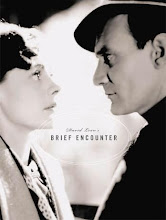I cannot draw on Carlos Reygadas’ oeuvre having just seen Silent Light, as apparently the element of shock and repulsion plays quite a role in his other films like Japon. Recent criticism, has classified the film under CCC- contemporary contemplative cinema. An ingenuous term, I reckon, considering how well it captures the essence of some contemporary cinema. Marked by certain properties like plotlessness, alienation, slowness and wordlessness, it is a strictly defined genre with even a detailed chronology, which has come to define very well, what was earlier known only as slow cinema. Of course, Harry Turtle identifies 34 films which concur with all the given properties, and silent light is not one of them. Most of us are probably familiar with ‘Spring, Summer, Fall, Winter…and Spring’ which is one of the 34 and which easily identifies with the categorical definition. This article isn’t going to be about CCC in any way, but I would like to point out however, that, even if Silent Light makes use of conventional plot devices insofar that the film is basically about a triangle between the husband, his wife and his mistress; it is CCC in many ways. In its essence, if I might say so at the risk of sounding hollow, the film moves with a certain perspective from the director, it refuses to be psychological, it doesn’t move with any pace, it deliberates on the mundane incidents, and it chooses to interact with nature, in a very elementary sense; not of aesthetics but present nature itself.
Silent Light, portrays life of the minority group of Russian Mennonites all right, but the film can is hardly about that. I mustn’t call it focus, it is a certain expansiveness, for expansiveness alone has a range which rushes over smoothly, which here, is not cultural representation but that of different people in the course of the story. But it is this range which is nothing specific, which can be described in what it is not- it is not about the community, it is not about the family and, it is not about infidelity-that helps us look in certain directions.
There is a scene where the camera moves slowly toward a woman bathing inside, there is no door, but two walls which seem to suggest a barrier, and the viewer does not want to go further either; but the camera does. This is one of the many instances through which we are drawn to the [in] action in the story. I suppose there are two distinct extremes which garner immersion from the audience- that of a very action packed story which calculatedly desires attention or a story that moves on its own and has a self-involved story and is not concerned with the audience. Naturally, Silent light falls in the latter category. It is not really a story about the hero who falls in love with another woman; yet it is a story revolving round the three characters- the man, his wife and his mistress. Character relation is of some importance here: from the beginning of the film we gather than the protagonist, man- Johann is facing a crisis. As the movie develops, we learn of Marianne, the mistress and aspects of her personality-that she is independent and that she understands he has to leave her and also that she loves Johann. Interestingly the personality of the person in question, the wife, Esther, is developed only toward the end. The audience is inclined to believe that Esther is just a housewife, who has become indifferent to her husband; yet culminating in her death, the audience is rudely awakened to the stoical passion of that common woman.
And what about the miracle? In the course of the funeral, where Johann is utterly devastated, and everyone else is mourning her, Marianne enters the room where the body is lain, and kisses her and Esther awakens, I guess from her death. No explanation of any kind is provided. Also we do not see Johann seeing his resurrected wife, or what happens afterward; whether he chooses to live with his wife or not. The film cuts directly to the outside, and the remainder of the film follows faithfully the setting of the sun and the stars. So, I don’t think we are supposed to find out what the miracle means for it is part of the movie and is to be appreciated separately. It can be easily be seen as a coming together of the dual personas, you know, the mistress and the wife; but I find that reading fatally reductive.
Thus aesthetics is such an important part of the story, though if done in such a naturalistic way and with such intentions, I don’t think it’d be fair to deem it aesthetics. Capturing such shots however underlines the characters’ spiritual or otherwise connection with nature. Similarly, this is to be seen as a decision taken by the director, and therefore be seen as part of the film’s world view. Opening and ending with brilliant shots of the dawn, the open sky and the myriad sounds. This obviously deflects attention from the characters or the story to something else. Interspersing such shots with the story emphasizes on the shots, and not on the story. Filming some action completely, like showing the family eat breakfast, or shooting the entire journey in a car, all do the same thing.
Subscribe to:
Post Comments (Atom)





No comments:
Post a Comment